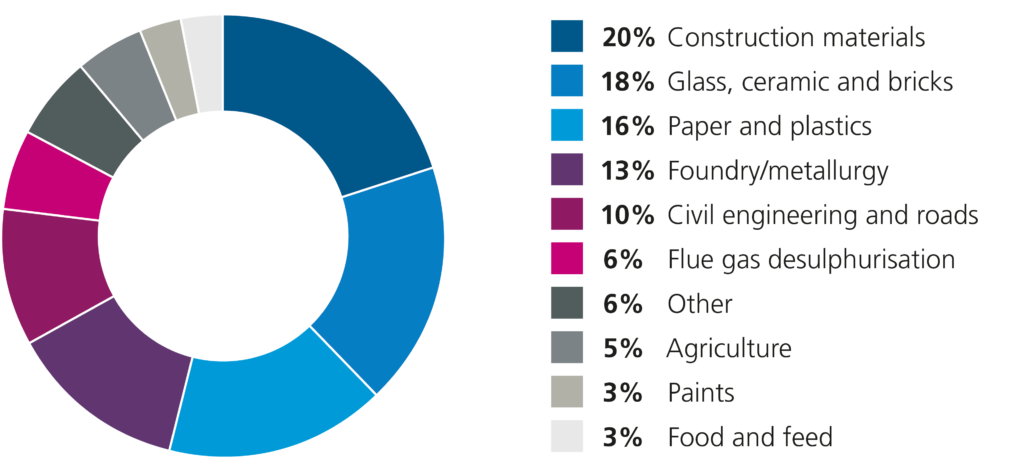What are Industrial Minerals?
Nature’s most popular raw materials
Society uses industrial minerals, either in a processed or natural state, to make building materials, ceramics, detergents, electronics, filtration, glass, medications and medical devices, paints, paper and plastics, and many more industrial and domestic products.
So what are they? Industrial minerals are defined as minerals that are not sources of metals, fuel, or gemstones. The most widely-used industrial minerals include, bentonite, calcium carbonate, clays, diatomite, dolomite, kaolin, limestone, silica and talc.
Industrial minerals are incredibly versatile; most have at least two, sometimes many more, applications and span multiple markets.
Key facts and figures

250
member companies

685
mines and quarries

750
processing plants

42,500 people
employed in 28 European countries (30 million jobs in downstream industries)

€14 billion
contribution to the European economy

180 million
tonnes of minerals produced per year
Main markets for industrial minerals in Europe

Industrial minerals are also increasingly essential to high-tech sectors through the production of wiring and fibre-optic cables, as well as environmentally friendly products and technologies such as wind turbines and photovoltaic panels.
Applications

Smartphones
contain up to 60% minerals:
- cover – calcium carbonate, mica and talc
- battery – calcium carbonate, silica and clays
- reinforced steel – silica, andalusite and lime
- glass – 47g of silica sand

Glass
contains up to 100% minerals:
- silica
- dolomite
- calcium carbonate
- lime
- feldspar
- borates

Paper
contains up to 50% minerals:
- calcium carbonate
- talc
- kaolin
- bentonite

Paint
contains up to 50% minerals:
- calcium carbonate
- quartz
- cristobalite
- plastic clays
- talc
- bentonite
- diatomite
- mica
- wollastonite

Ceramics
contain up to 100% minerals:
- feldspar
- clay
- kaolin
- lime
- talc
- silica

Houses
contain up to 150 tonnes of minerals

Cars
contain up to 150kg of minerals

Solar cells
contain up to
95% minerals

Turbine blades
contain up to
95% minerals

Iron making requires bentonite, lime and limestone